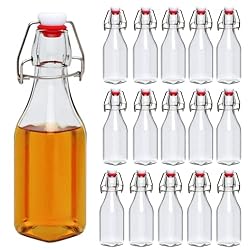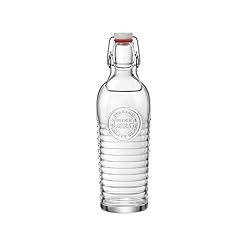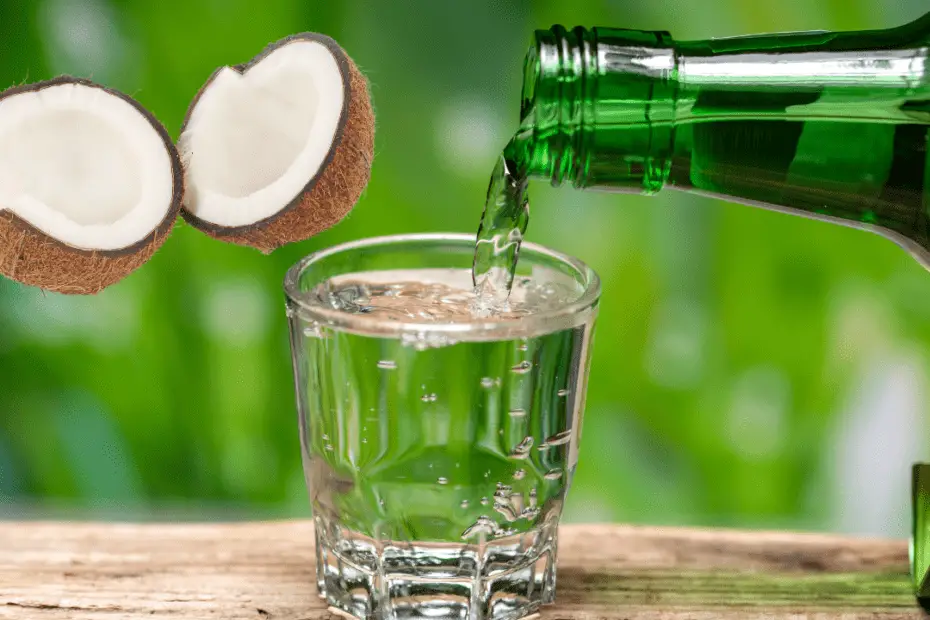Does Lambanog Go Bad?
YES! Experts suggest that improper storage and handling can cause the liquor to spoil over time. It is important to store lambanog in a cool, dark place and to consume it within a reasonable amount of time to ensure its quality and safety.
What is Lambanog?
Lambanog is a traditional Filipino distilled coconut palm liquor, made from the sap of coconut flowers. It is known for its high alcohol content, which ranges from 40% to 45% by volume. Lambanog is also commonly referred to as “coconut vodka” due to its clear to milky-white appearance and its strong, distinct flavor.
The process of making lambanog involves collecting the sap from the coconut flowers, which is then fermented for at least 48 hours. After fermentation, the liquid is then distilled to produce a clear, colorless liquor. The final product is typically bottled and sold in various sizes, ranging from small bottles to large jugs.
What Does Lambanog Taste Like?
Lambanog has a strong, distinct taste and aroma of coconut, with a slightly sweet and nutty flavor. It is a clear, colorless spirit that is quite strong. Depending on the brand, modern varieties of lambanog may be tinted, sweetened, and flavored with fruits or spices.
How Long Before Lambanog Goes Bad?
Lambanog can last indefinitely if stored properly. However, once opened, it is recommended to consume it within a year to ensure the best quality.
Factors that Affect the Shelf Life of Lambanog
Several factors affect the shelf life of lambanog. The alcohol content, sugar content, and acidity levels are the main factors that determine how long the liquor will last. Lambanog has a high alcohol content, which helps preserve it. However, if the alcohol content is too low, the liquor may spoil quickly.
The sugar content also plays a role in the shelf life of lambanog. If the liquor has a high sugar content, it may ferment further and turn sour. Acidity levels also affect the shelf life of lambanog. If the acidity level is too high, it may spoil the liquor.
Signs that Lambanog Has Gone Bad
There are several signs that lambanog has gone bad. The first sign is a change in color. If the liquor has turned cloudy or has a milky appearance, it may have spoiled. The second sign is a change in smell. If the liquor has a sour or musty smell, it may have gone bad. The third sign is a change in taste. If the liquor tastes sour or has an off-flavor, it may have spoiled.
What are the Risks of Drinking Lambanog?
While lambanog is a popular alcoholic beverage in the Philippines, it is important to note that it carries certain risks. Improper distillation and fermentation can lead to the presence of methanol, a toxic substance that can cause blindness or death if consumed in large amounts. In fact, there have been several cases of lambanog poisoning reported in the Philippines, with some incidents resulting in fatalities.
For example, in 2019, at least 11 people died and hundreds more were hospitalized due to methanol poisoning from drinking lambanog. The incident prompted the Philippine government to issue a warning against the consumption of unregistered and untested lambanog products. It is important to only consume lambanog from reputable sources to ensure its safety.
Another risk associated with drinking lambanog is the potential for contamination with harmful bacteria or other toxins. Lambanog is often produced in small, unregulated distilleries, which may not adhere to strict hygiene and safety standards. As a result, the drink may be contaminated with harmful substances that can cause illness or even death.
In addition to these risks, frequently drinking lambanog can also lead to other health problems, such as liver damage, addiction, and alcohol poisoning. It is important to drink lambanog in moderation and to be aware of the risks associated with this popular Filipino drink.
To avoid the risks associated with drinking expired or contaminated lambanog, it is important to purchase from reputable sources and check the expiration date before consuming. If you suspect that your lambanog has gone bad or has been contaminated, it is best to dispose of it immediately.
If you or someone you know has experienced symptoms of lambanog poisoning, such as dizziness, headaches, nausea, vomiting, or loss of vision, seek medical attention immediately. Methanol poisoning can be life-threatening and requires prompt treatment to prevent serious complications.
How to Store Lambanog Properly
To ensure that lambanog lasts as long as possible, it must be stored properly. The best container for storing lambanog is a glass bottle with a tight-fitting, like the one shown below. This bottle can be used in your homebrewed lambanog.

This Italian bottle with airtight seal and metal clamp is also ideal container for lambanog:

It is important to store lambanog in a cool, dark place away from direct sunlight. If you plan to store lambanog for an extended period of time, it is recommended to store it in a refrigerator or a wine cooler to maintain its quality.
How to prolong the shelf life of lambanog
- Store lambanog in a cool, dry place away from direct sunlight.
- Keep the glass bottle tightly sealed to prevent air from entering.
- Avoid exposing lambanog to extreme temperatures or fluctuations in temperature.
- Don’t store lambanog in plastic containers as the alcohol can react with the plastic and cause contamination.
- Do not mix different batches of lambanog, as this can affect the taste and quality of the drink.
Alternatives to Lambanog
If you are looking for an alcoholic alternative to lambanog, there are many other types of liquor available that may be more readily accessible and have a lower risk of contamination. Some popular options include:
- Rum
- Vodka
- Gin
- Tequila
It is important to note that while these alternatives may be safer than lambanog, there are still risks associated with consuming alcohol in excess. Always drink responsibly and in moderation.
